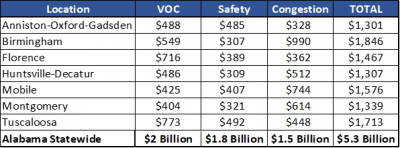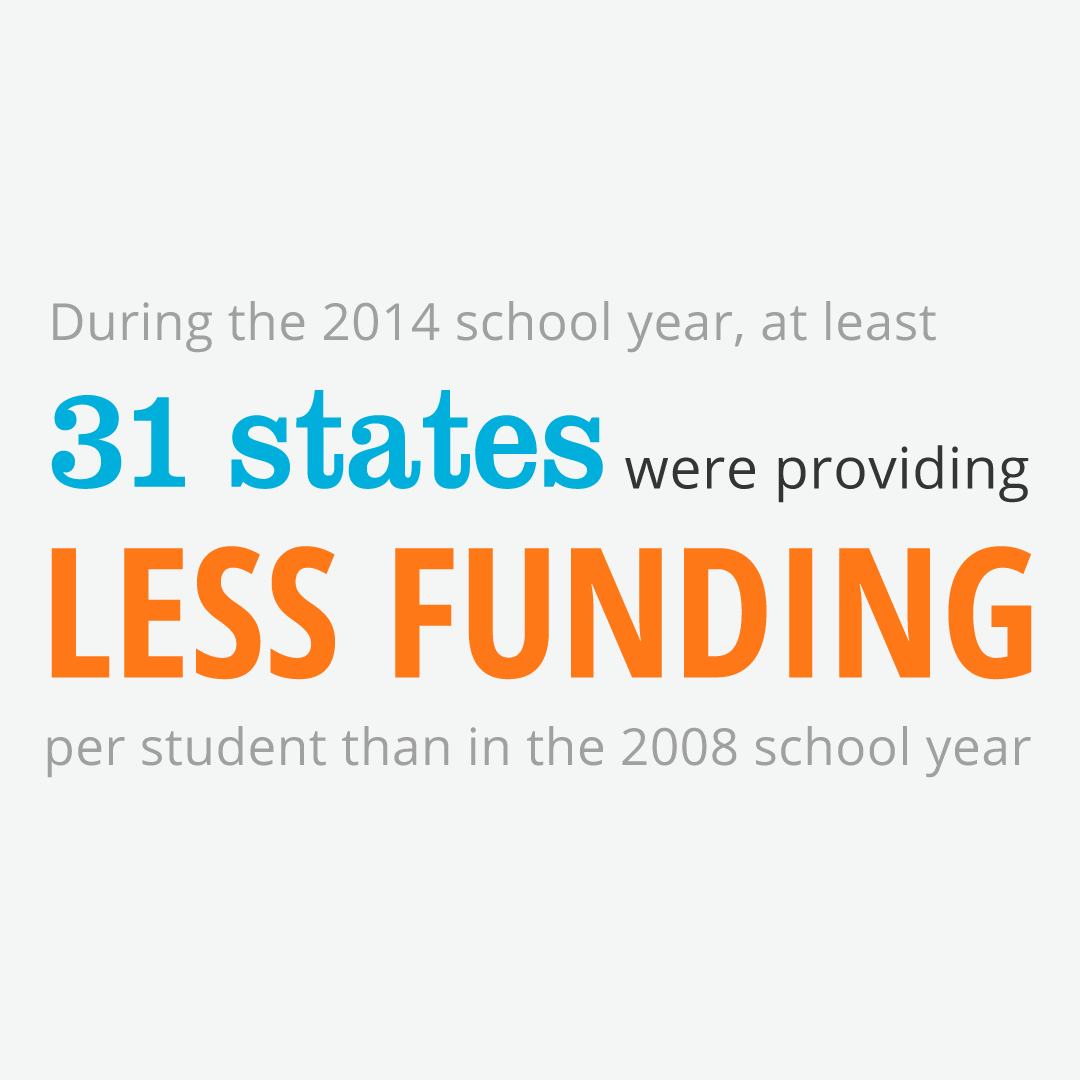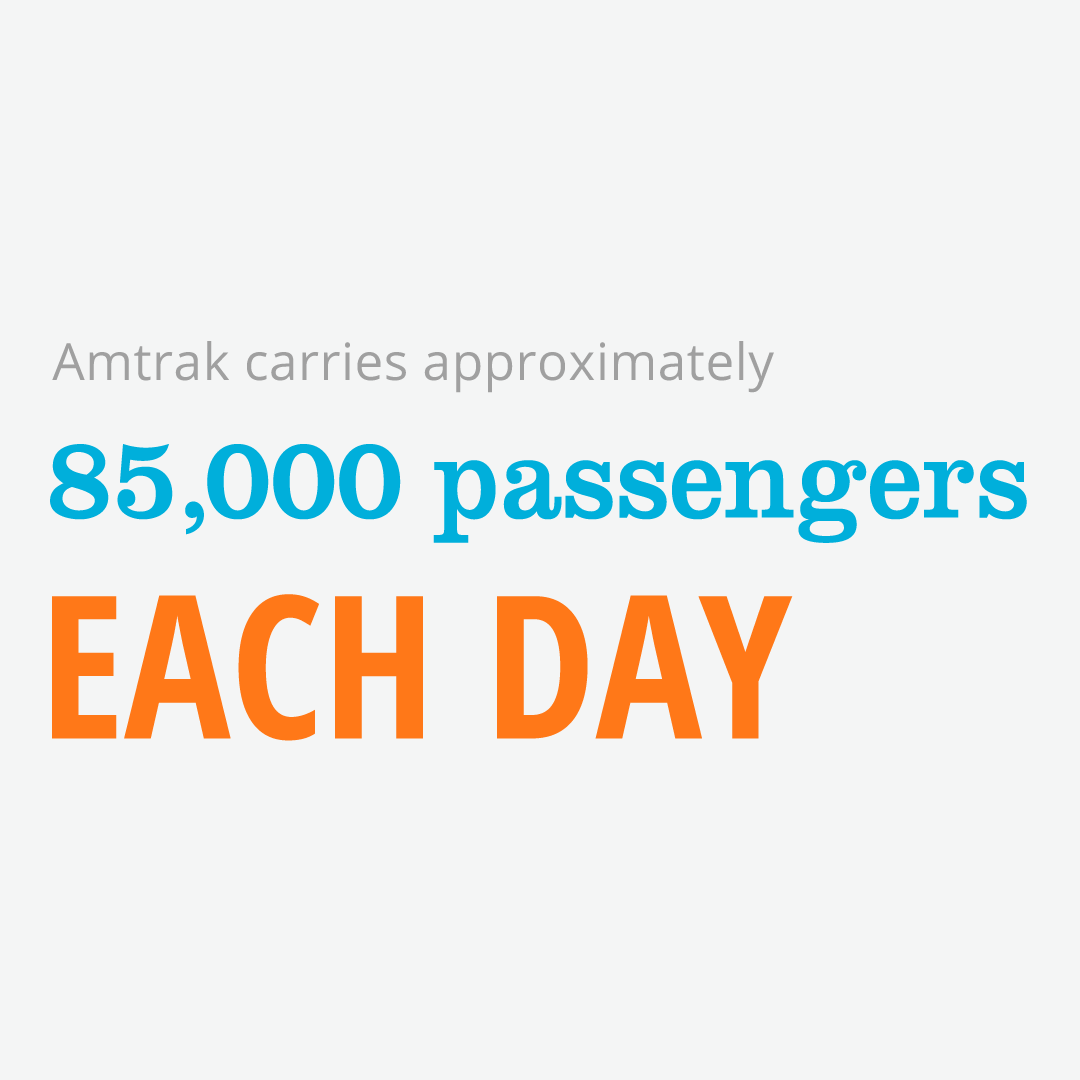 The national transportation research group TRIP released a new report on February 26, 2019, stating that deteriorated roads and bridges, congestion, and lack of desirable safety features are costing Alabama motorists $5.3 billion per year in extra vehicle operating costs, which is about $1,846 per driver, due to the cost of lost time waiting in traffic, wasted fuel due to congestion, and the financial cost of traffic crashes.
The national transportation research group TRIP released a new report on February 26, 2019, stating that deteriorated roads and bridges, congestion, and lack of desirable safety features are costing Alabama motorists $5.3 billion per year in extra vehicle operating costs, which is about $1,846 per driver, due to the cost of lost time waiting in traffic, wasted fuel due to congestion, and the financial cost of traffic crashes.
The report, “Alabama Transportation by the Numbers: Meeting the State’s Need for Safe, Smooth and Efficient Mobility” finds that 30 percent of major roads and highways in Alabama are in poor or mediocre condition. 14 percent of locally and state-maintained roads are in poor condition and 16 percent are in mediocre condition, which costs Alabamians an additional $2 billion each year in extra vehicle operating costs (tire wear and tear, increased fuel consumption, repair costs, and accelerated vehicle depreciation). In urban areas, drivers lose up to $990 and nearly one full work week per year sitting in congestion. Additionally, seven percent of Alabama’s bridges are structurally deficient, which means there is significant deterioration of the bridge deck, supports, or other major components. Most bridges are designed to last 50 years before any major overhaul or replacement work and in Alabama, nearly half (49 percent) of the state’s bridges were built in 1969 or earlier. The report recommends performing routine maintenance such as resurfacing decks, painting surfaces, insuring facilities have good drainage, and replacing any components that are deteriorating. However, most bridges in the state will eventually require costly reconstruction or restoration to remain operable.
Alabama’s transportation system contributes to the health and growth of the state’s economy. $432 billion in goods are shipped to, from, and within sites in the state. Increases in passenger and freight movement will continue to place burdens on the state’s deteriorated and congested roads and bridges. Furthermore, the state’s 18 cents-per-gallon fuel tax, which has not been raised since 1992, has been more than cut in half by inflation and increased fuel economy. The majority of Alabama’s transportation budget is only devoted to preserving the existing system – which leaves only $150 million available each year for new projects to address congestion or expand the system to accommodate growth in population and travel, as well as promote economic development.
The report argues that as Alabama works to enhance its thriving, growing, and dynamic state, it is critical that the state address the most significant transportation issues by providing a 21st century network of roads, bridges, and other transportation networks that can accommodate the high mobility demands of a modern society. The state must modernize its surface transportation system by improving the physical condition of its transportation network and ensure that it provides efficient, safe, and reliable mobility for residents, tourists, and businesses. Making these needed improvements will provide a significant boost to the economy. Moreover, local and state transportation funding is needed to improve numerous transportation projects, or else the state will not be able to improve the condition and efficiency of tits transportation system, or even enhance economic development opportunities and quality of life.
ASCE released the last Alabama Infrastructure Report Card in 2015, giving the state a grade of C-, with bridges and roads at a C- and D+, respectively. One recommendation ASCE gave was to invest in Alabama’s future by rebuilding the oldest and most deficient infrastructure. Let’s hope this report sheds light on the importance of modernizing Alabama’s transportation infrastructure, which will grow the economy and save Alabama motorists time and money.























































